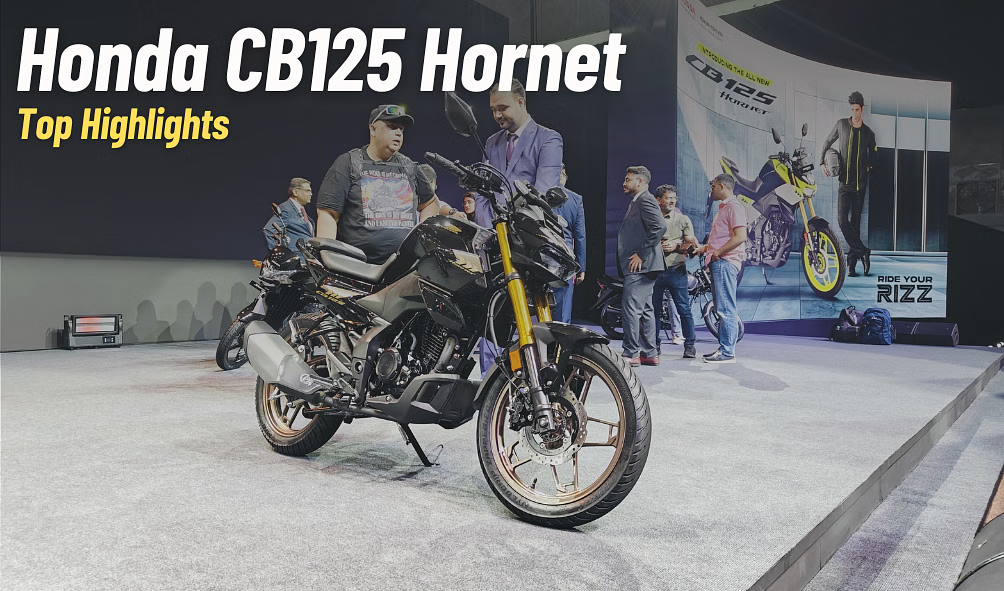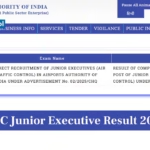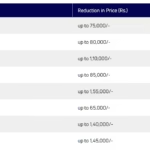Honda, a name synonymous with reliability and innovation, has once again captured attention with the Honda CB125 Hornet—a striking entry-level streetfighter that perfectly balances aggressive design, modern technology, and refined performance. Tailored for young riders and urban commuters, the CB125 Hornet is a head-turner in the 125cc segment and showcases Honda’s dedication to bringing premium feel to even the smallest categories.
In this blog, we will explore everything about the CB125 Hornet—from its design and specifications to performance, features, and how it stands against its competition.
A Bold Streetfighter Design
At first glance, the CB125 Hornet looks nothing like a basic commuter. It inherits its aggressive styling from its bigger sibling—the CB750 Hornet—featuring sharp body lines, a muscular fuel tank, and compact tail design. The overall silhouette is sleek, edgy, and aerodynamic, targeting younger riders who want a bike that not only performs well but also looks fantastic on the road.
Key design highlights:
- LED headlamp with a sharp eyebrow-style DRL
- Tapered tail section for a sporty stance
- Sculpted fuel tank with aerodynamic shrouds
- Fully digital LCD display for a futuristic cockpit
- Wide handlebars for an upright and confident riding position
The bike is available in sporty color schemes like Pearl Cool White, Matte Black Metallic, and Rebel Red, all of which complement its urban warrior persona.
Engine and Performance
Powering the Honda CB125 Hornet is a 124.7cc single-cylinder, liquid-cooled, 4-valve engine, delivering around 14.7 bhp at 10,000 rpm and 11.6 Nm of torque at 8,000 rpm. This makes it one of the most powerful bikes in the 125cc category, rivalling the likes of KTM 125 Duke and Yamaha MT-125.
The engine is mated to a smooth 6-speed gearbox, allowing for better high-speed cruising and versatility. Honda has tuned this motor for strong mid-range performance, making it ideal for city traffic and occasional highway rides.
Performance Highlights:
- Acceleration from 0-60 km/h in under 6 seconds
- Top speed of around 115 km/h
- Refined engine character with minimal vibrations
- Fuel efficiency of around 45–50 km/l, depending on riding style
Suspension and Ride Quality
The CB125 Hornet doesn’t compromise when it comes to underpinnings. It gets 41mm Showa USD front forks—a feature typically reserved for bigger bikes—and a monoshock rear suspension, offering great stability and comfort.
Combined with its petal disc brakes on both ends and single-channel ABS, the bike offers excellent stopping power and confidence even under hard braking.
Handling and Comfort:
- Lightweight chassis for nimble handling
- Upright ergonomics for daily commuting
- Wide seat and decent cushioning for both rider and pillion
- 17-inch alloy wheels with grippy tires for improved cornering
Whether you’re cutting through city traffic or enjoying weekend rides, the CB125 Hornet delivers a well-rounded, confidence-inspiring ride.
Tech and Features
Despite being a 125cc motorcycle, Honda has equipped the CB125 Hornet with a decent list of modern features. Riders will appreciate the LCD instrument cluster, which displays all the necessary information, including:
- Speedometer
- Tachometer
- Gear position indicator
- Fuel level
- Trip meters
- Clock
Other feature highlights include:
- All-LED lighting (headlight, taillight, and indicators)
- Engine kill switch
- Hazard light function
- Single-channel ABS for added safety
- HISS (Honda Ignition Security System) in some markets
CB125 Hornet vs Rivals
The 125cc premium motorcycle space is becoming more competitive, and the CB125 Hornet finds itself among worthy contenders. Here’s how it stacks up:
| Feature/Model | Honda CB125 Hornet | KTM 125 Duke | Yamaha MT-125 | TVS Raider 125 |
|---|---|---|---|---|
| Engine | 124.7cc, 4V, Liquid-cooled | 124.7cc, 4V, Liquid-cooled | 124cc, 4V, Liquid-cooled | 124.8cc, Air/Oil-cooled |
| Power | 14.7 bhp | 14.5 bhp | 14.7 bhp | 11.2 bhp |
| Gearbox | 6-speed | 6-speed | 6-speed | 5-speed |
| Suspension | USD front, Mono rear | USD front, Mono rear | USD front, Mono rear | Telescopic front, Mono rear |
| Price (est.) | ₹1.40–1.50 lakh* | ₹1.80 lakh+ | ₹1.60 lakh+ | ₹95,000–₹1 lakh |
*Expected pricing for India launch
Honda clearly positions the CB125 Hornet as a high-performance entry-level naked bike, offering similar levels of performance at a potentially lower cost compared to the KTM and Yamaha options.
Who Should Buy the Honda CB125 Hornet?
The CB125 Hornet is aimed at:
- Beginners and young riders looking for a stylish, high-quality first bike
- Urban commuters who want premium features and reliability
- College students who want performance without the burden of high fuel and maintenance costs
- Riders who prioritize Honda’s brand reliability and long-term value
It’s also ideal for those who want to upgrade from a scooter or commuter but aren’t ready for 200cc+ performance yet.
Expected India Launch
While the CB125 Hornet is already available in European markets, Honda has not officially confirmed an India launch, but speculations suggest that it could arrive by late 2025 or early 2026.
If launched in India, Honda may tweak the bike slightly to meet local preferences—possibly replacing the USD forks with conventional ones and tuning the engine for better mileage, just to keep costs in check.
Expected ex-showroom price: ₹1.35 lakh to ₹1.50 lakh
Pros and Cons
✅ Pros:
- Premium, aggressive design
- Best-in-class power output
- Smooth 6-speed gearbox
- Honda reliability
- Lightweight and nimble handling
❌ Cons:
- High pricing for 125cc segment
- No dual-channel ABS
- Uncertain India launch timeline
- Not ideal for highway touring
Final Verdict
The Honda CB125 Hornet is not just a 125cc bike—it’s a statement of style and performance for those entering the world of motorcycling. With its sporty looks, powerful engine, and refined features, it sets a new benchmark in the 125cc category. If Honda brings it to India at a competitive price, it has the potential to dominate the premium commuter market and become a favorite among young riders.
Until then, enthusiasts can only hope that this small-capacity beast makes its way to Indian roads soon.










